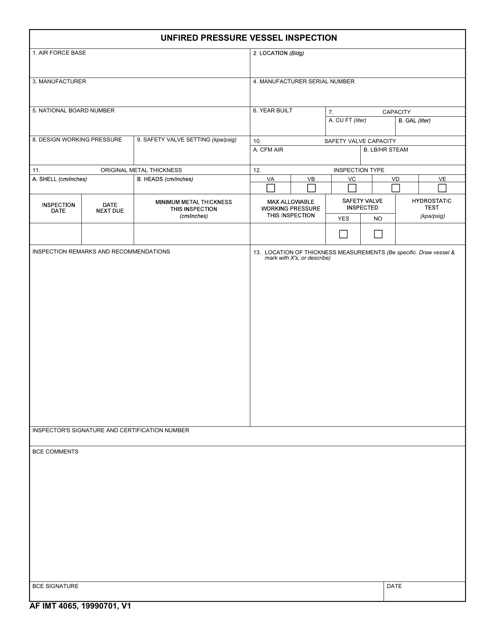Unfired Pressure Vessel Templates
Unfired Pressure Vessel - Ensuring Safety and Compliance
Unfired pressure vessels play a crucial role in various industries, providing a contained environment for storing or processing liquids or gases. These vessels, also known as unfired pressure containers or non-fired pressure vessels, are designed to withstand the internal pressure exerted by the substances they hold.
At the heart of any comprehensive safety program is regular inspection and maintenance of unfired pressure vessels. These inspections are essential to ensure that the vessels are properly designed, constructed, and installed, and meet the necessary safety standards. They help identify potential issues such as corrosion, leaks, or structural weaknesses that may compromise the integrity of the vessel.
GSA Form 350 Inspection Report of Unfired Pressure Vessels, AF IMT Form 4065 Unfired Pressure Vessel Inspection, and Form LIIB-305 Unfired Pressure Vessel Industrial Board Petition - Pennsylvania are just a few examples of the documentation required to track and validate the compliance of unfired pressure vessels. These documents serve as official records of inspections, certifications, and petitions related to the inspection and operation of unfired pressure vessels.
Whether you are an owner, operator, or inspector of an unfired pressure vessel, it is essential to maintain accurate and up-to-date documentation. Not only does this demonstrate your commitment to safety and compliance, but it also ensures that you are prepared for any regulatory or legal requirements that may arise.
As an industry professional, staying informed about the latest regulations, guidelines, and best practices pertaining to unfired pressure vessels is vital. This knowledge will assist you in maintaining a safe working environment, complying with relevant standards, and avoiding potential legal and financial consequences.
In summary, unfired pressure vessels are critical assets that require careful monitoring, inspection, and documentation. By consistently adhering to safety protocols and maintaining accurate records, you can ensure the reliability and integrity of your unfired pressure vessels, promoting the safety of your workforce and the efficiency of your operations.
Documents:
7
This form is used for reporting inspections of unfired pressure vessels. It ensures that these vessels are safe and compliant with regulations.
This form is used for conducting inspections of unfired pressure vessels in the Air Force.



